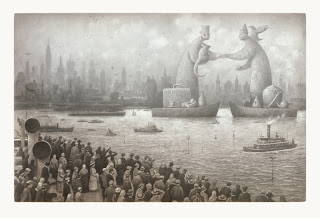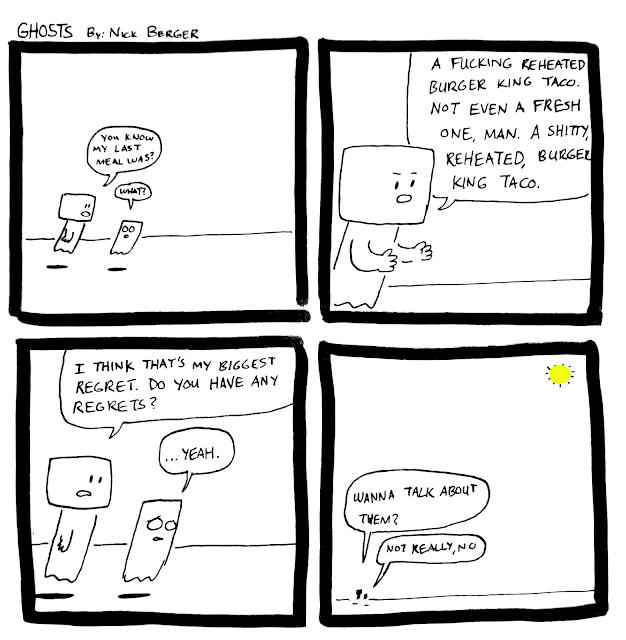Week 1-The Arrival
The Arrival by Shaun Tan is a masterclass in how to tell a story without using any words. In the comic, Tan uses simple yet effective panel layouts to make the actions easy to read. Tan frequently uses 9-12 panel grids so he can show many important images at once, making it easier for the reader to see what is happening in any given moment. When Tan wants to convey that an image or idea is important, he will either use a full page spread or a double page spread.
In addition to the page layouts, Tan’s clean and realistic art makes it very easy for the reader to understand what is happening. Every character is expressive without being too stylized, grounding the art in a way that makes it more readable without the necessity of words. Tan’s detailed rendering makes it easy to tell when a character is in a new place or when it’s a certain time of day, even with (or partly because of) the limited color palette.
One of Tan’s greatest tools in this story is his use of surrealist aspects. In order to give the reader, the feeling of being in a new and unfamiliar place (like what the protagonist is feeling), Tan has double page spreads showing cityscapes with giant flowing statues and otherworldly architecture. However, even these otherworldly landscapes are rendered realistically, which makes it feel like it is a tangible place.
In tandem with the landscapes, Tan also shows some things in abstract ways that, ironically, make them more relatable to a wider audience. For example, when the protagonist sends a letter to his family while on a boat, he writes it on a piece of paper and folds it into a bird. The bird then flies away and we are shown a page full of other origami birds flying away. This is a perfect way of expressing the idea that there are many immigrants on the boat sending letters to their families. While Tan could have had the protagonist write a letter, put it in an envelope, and mail it, and still had it be legible, he chose to do this. While it is safe to assume many readers have mailed a letter before, it is also possible they haven’t. Doing something symbolic, then, makes the idea more relatable because it is less specific. It gets at the feeling of what is happening, which is far more important in this story than making what is happening as true to life as possible.
That’s the thing about The Arrival in general; Tan is more interested in making the reader relate to the feelings and ideas of the book rather than the specific actions. Tan masterfully shares his experience immigrating to Australia with the reader, even if they haven’t even left their home country. Anyone who has been somewhere new can relate to at least some aspect of this comic, due to its combination of specificity and abstraction.




Comments
Post a Comment